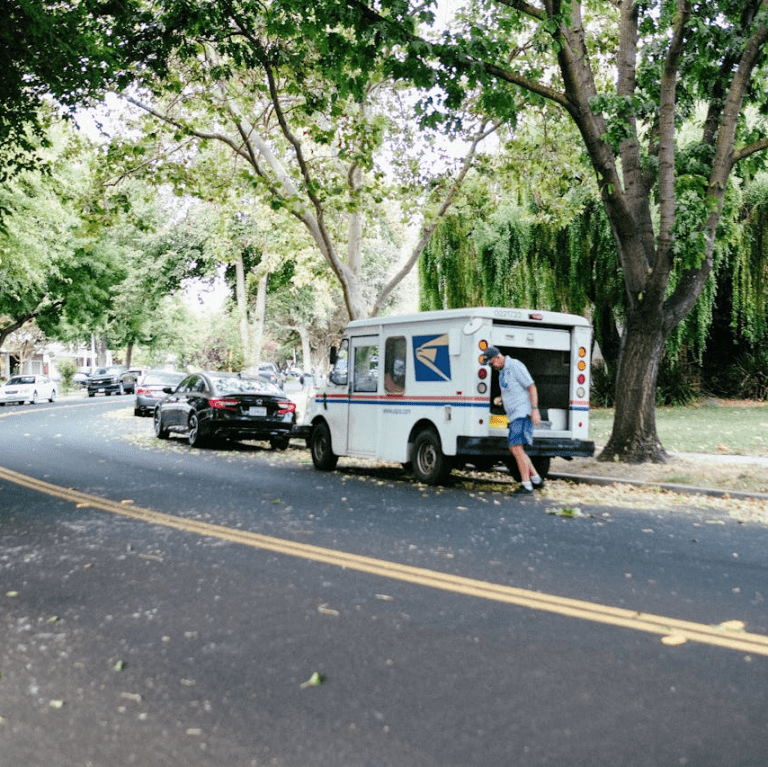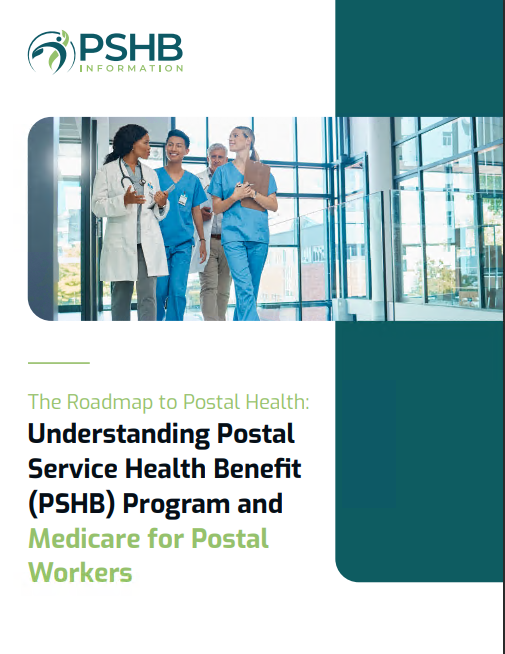Key Takeaways
-
If you’re a Medicare-eligible postal retiree or family member and you don’t enroll in Part B, your Postal Service Health Benefits (PSHB) plan could lose a key part of its coverage.
-
Not signing up for Part B when required may result in higher out-of-pocket costs, reduced benefits, or even a loss of eligibility for certain PSHB features in 2025 and beyond.
Understanding the PSHB and Medicare Part B Connection
Beginning January 1, 2025, the Postal Service Health Benefits (PSHB) Program officially replaces FEHB coverage for USPS employees, retirees, and their family members. If you’re already on Medicare or becoming eligible soon, it’s critical to understand how Medicare Part B enrollment impacts your PSHB plan.
This is not just an optional upgrade—it may be a requirement.
The PSHB Program is integrated with Medicare in a way that makes Part B enrollment essential for certain enrollees. If you miss the Part B enrollment window or choose not to enroll when you’re required, your health benefits can be significantly affected.
Who Must Enroll in Part B?
You’re required to enroll in Medicare Part B to maintain full PSHB benefits if:
-
You’re a USPS retiree who is entitled to Medicare Part A and were under age 64 as of January 1, 2025.
-
You’re a family member on a PSHB plan who is entitled to Medicare Part A and meets the same age requirement.
If you retired on or before January 1, 2025, and you’re not already enrolled in Part B, the mandate does not apply to you. But if you fall into the category above, you must enroll in Medicare Part B when you’re eligible—typically starting at age 65.
What If You Skip Part B?
Failure to enroll in Medicare Part B when required by PSHB rules can lead to the following consequences:
-
You could lose your drug coverage. PSHB drug coverage for Medicare-eligible enrollees is coordinated through Medicare Part D via an EGWP (Employer Group Waiver Plan). Not having Part B could result in your drug coverage being dropped.
-
You may pay more for routine medical care. Without Part B, your PSHB plan will not coordinate benefits the same way, meaning you may face higher deductibles and copayments.
-
Loss of premium reimbursements. Some PSHB plans offer partial reimbursements for your Medicare Part B premium, but this only applies if you’re enrolled in Part B.
-
You might lose access to enhanced coordination. Most PSHB plans reduce out-of-pocket costs for services like hospital stays, surgeries, and doctor visits when Part B is active. Without it, your plan may act as the sole payer, shifting the full cost burden to you.
The Timeline You Need to Watch
The key enrollment timeline for Medicare Part B is your Initial Enrollment Period (IEP), which is:
-
3 months before the month you turn 65
-
The month of your 65th birthday
-
3 months after your birthday month
If you miss this window, you must wait until the General Enrollment Period (January 1 to March 31), and coverage won’t begin until July 1. You could also face a lifetime late enrollment penalty on your Part B premium.
Under PSHB rules, you may also face plan-related consequences starting in the year after you were first required to enroll.
Common Reasons People Don’t Enroll—and Why They Don’t Apply Now
Many retirees avoided enrolling in Part B under the old FEHB system to save on monthly premiums. That approach is no longer sustainable for most postal retirees under PSHB. Here’s why that thinking no longer works:
-
“I already have coverage through PSHB.” Yes, but it’s designed to work with Medicare now. Skipping Part B can result in reduced benefits or dropped coverage.
-
“I’m healthy, so I don’t need it.” PSHB rules don’t take health status into account. The requirement is based on eligibility, not medical need.
-
“I don’t want to pay the extra monthly cost.” Not enrolling when required can lead to much higher costs later due to uncovered services, denied claims, or penalties.
What PSHB Plans Expect When You’re Medicare-Eligible
Most PSHB plans in 2025 are structured with the assumption that you are also enrolled in Medicare Parts A and B if you’re eligible. Here’s how that impacts your benefits:
-
Inpatient care: Medicare Part A pays first, and your PSHB plan pays second. Without Part B, you could be liable for costs that would normally be shared.
-
Outpatient care: Part B typically pays 80% of approved charges. Your PSHB plan picks up the rest. Without Part B, you may have to pay the full amount until your PSHB deductible and coinsurance are met.
-
Prescription drugs: Medicare Part D (via EGWP) is automatically included in your PSHB plan if you’re enrolled in Medicare. You must also be enrolled in Part B to retain that drug coverage.
What If You Change Your Mind Later?
If you decline Part B now but later realize you need it, you may have to wait until the next General Enrollment Period to sign up. Even then, your coverage won’t start until July 1 of that year—and you’ll likely pay a penalty for every year you delayed.
This could mean:
-
Gaps in medical coverage
-
Higher monthly premiums for life
-
Loss of certain PSHB benefits that assume Part B enrollment
What About Special Enrollment Periods?
You might qualify for a Special Enrollment Period (SEP) if you delayed enrolling in Part B because you had other creditable coverage, such as employer-sponsored insurance. But this doesn’t apply if PSHB was your only coverage and you were already Medicare-eligible.
Keep in mind: once your Part B requirement kicks in under PSHB, you must act promptly to avoid penalties or benefit disruptions.
Coordination Between Medicare and PSHB
The PSHB Program was designed to mirror the structure of Medicare coordination. Your Medicare coverage becomes primary, and PSHB coverage becomes secondary. This results in:
-
Lower out-of-pocket costs when both parts are in place
-
Streamlined claims processing
-
Greater protection against high medical expenses
Skipping Part B disrupts this structure and creates inefficiencies, both for you and your plan provider.
How to Confirm If You’re Required to Enroll
You can check your eligibility and requirement status in the following ways:
-
Review communications from OPM or the PSHB Navigator
-
Log into your Medicare account to check your Part A entitlement
-
Speak with a licensed agent listed on this website to walk through your eligibility and timing
This step is too important to delay. If you’re unsure whether the requirement applies to you, it’s better to ask now than to discover a costly mistake later.
Why This Requirement Exists
The PSHB integration with Medicare is intended to provide:
-
More efficient use of taxpayer funds
-
Lower overall premiums and cost-sharing for enrollees
-
Long-term stability for the retiree health system
Part B enrollment helps achieve these goals by allowing Medicare to serve as the primary payer, reducing the financial load on PSHB plans. In return, enrollees receive better coverage coordination—but only if both parts are active.
What You Should Do Now
If you’re nearing age 65 or already eligible for Medicare, take these steps:
-
Check if you’re required to enroll in Part B
-
Mark your Medicare Initial Enrollment Period on your calendar
-
Set a reminder three months before your 65th birthday to start the enrollment process
-
Consider calling a licensed insurance agent listed on this website for a personalized review
Planning Ahead Matters
The shift from FEHB to PSHB is more than just a name change—it’s a structural overhaul that hinges on Medicare Part B integration. For those who meet the requirement, skipping Part B is not just a personal choice; it’s a decision that can directly affect your access to care and how much you pay for it.
Don’t let timing mistakes or outdated assumptions cost you in retirement. Take the time to verify your Medicare enrollment requirement and follow through during your enrollment window. You only get one Initial Enrollment Period, and the PSHB program will expect you to use it wisely.
Understand the Real Impact on Your Benefits
The consequences of not signing up for Medicare Part B when required by PSHB guidelines extend far beyond a simple late fee. You could be putting your entire health strategy at risk—especially with the way prescription drugs and outpatient care are coordinated in 2025.
If you’re not sure how all these parts fit together, now is the right time to get help. You can speak with a licensed insurance agent listed on this website to get clarity on whether you need to act—and what to do next.







